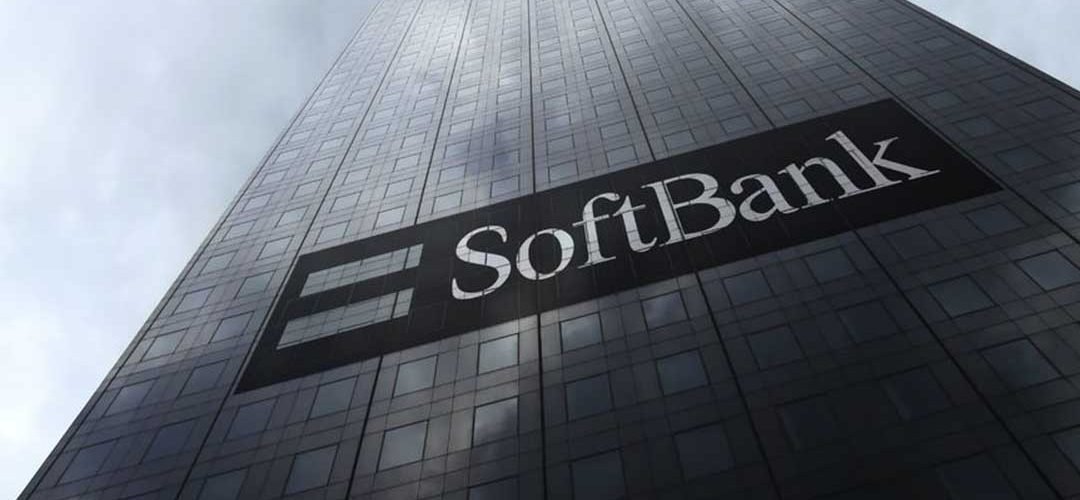Tools & Platforms
Future Tech focuses on AI for PCs in partnership with Dell

Dell Technologies Inc. has entered the artificial intelligence era with the spirit of collaboration, and Future Tech Enterprise Inc. is happy to be on that bandwagon. Future Tech’s partnership with Dell is still going strong, building off of Dell’s AI Factory and AI studio to offer more advanced IT solutions.
Future Tech’s Bob Venero talks with theCUBE about the company’s collaboration with Dell.
“We’re working with Dell on taking an AI factory and making it an AI proving ground,” said Bob Venero (pictured), president and chief executive officer of Future Tech Enterprise Inc. “We’re going to say, ‘What are the use cases you’re trying to do?’ We’re going to test it, we’re going to vet it, and then based on the success of what we do … you’re going to consume it.”
Venero spoke with theCUBE’s Savannah Peterson and Jackie McGuire at Dell Technologies World, during an exclusive broadcast on theCUBE, SiliconANGLE Media’s livestreaming studio. They discussed Future Tech and Dell’s collaboration. (* Disclosure below.)
Future Tech drives on-prem AI with smarter PCs
The age of AI may give rise to a legion of intelligent personal computers, according to Venero. With Dell, Future Tech aims to make running AI models on a PC ecosystem as easy as possible for customers.
“Taking that PC and enabling it to do more, to being intelligent, to having a [graphics processing unit], a [neural processing unit] and a [central processing unit], and having the ability to do more of those things at the edge and empower the people to be even better and stronger,” Venero said. “We’re seeing a lot of thought and adoption around how do we empower at the edge?”
Doing AI on the edge and on-premises has become a growing trend, with a large number of executives moving their data off the cloud. Venero sees on-prem AI solutions as the more secure option, protecting essential data from the dangers of hacking and outages.
“If it’s $2, put it in the cloud,” he said. “If it’s a million dollars a minute, keep it on-prem. Build your guardrails around it. Secure your data and your information because if that goes down, and it will, in the cloud, there will be an outage, then what are you going to do?”
Here’s the complete video interview, part of SiliconANGLE’s and theCUBE’s coverage of Dell Technologies World:
(* Disclosure: Future Tech Enterprise sponsored this segment of theCUBE. Neither Future Tech nor other sponsors have editorial control over content on theCUBE or SiliconANGLE.)
Photo: SiliconANGLE
Support our mission to keep content open and free by engaging with theCUBE community. Join theCUBE’s Alumni Trust Network, where technology leaders connect, share intelligence and create opportunities.
- 15M+ viewers of theCUBE videos, powering conversations across AI, cloud, cybersecurity and more
- 11.4k+ theCUBE alumni — Connect with more than 11,400 tech and business leaders shaping the future through a unique trusted-based network.
About SiliconANGLE Media
Founded by tech visionaries John Furrier and Dave Vellante, SiliconANGLE Media has built a dynamic ecosystem of industry-leading digital media brands that reach 15+ million elite tech professionals. Our new proprietary theCUBE AI Video Cloud is breaking ground in audience interaction, leveraging theCUBEai.com neural network to help technology companies make data-driven decisions and stay at the forefront of industry conversations.
Tools & Platforms
Janus Health Joins Cipher Collective as Revenue Cycle Technology Provider in AI-Enabled Healthcare Initiative – geneonline.com
Tools & Platforms
SoftBank rides tech rally with AI investments, but will they pay off?

SoftBank Group has been among the top performers on Tokyo’s Prime market this year, surging on the back of a US tech rally powered by an artificial intelligence boom.
The conglomerate’s increasing AI investments have fueled hopes for lucrative returns, but some investors are still mulling whether it’s worth the bet.
Shares in SoftBank are up more than half this year, gaining steam over the last few months and outperforming the benchmark Nikkei Stock Average’s 8.5% gain. SoftBank touched an all-time closing high of JPY 16,705 (USD 113) on Aug. 18, helping push the Nikkei average to a record high last month, before tumbling to the 14,000 level.
Tomoichiro Kubota, a senior market analyst at Matsui Securities in Tokyo, said the stock’s more recent weakness reflected concerns among retail investors that its rally was due for a pause.
“SoftBank’s share price doubled in a short period of time as expectations and hopes for its future growth climbed very quickly,” he said. “Long-term institutional investors operate differently, but for Japanese retail investors, it was an opportunity to short-sell the stock amid the rapid rise.”
The stock had been buoyed by a string of announcements and news headlines.
Just days after the Japanese giant revealed that it would invest USD 2 billion in Intel and acquire a stake of around 2%, President Donald Trump said the US government will take a roughly 10% stake in the chipmaker in exchange for outstanding federal grants.
“Semiconductors are the foundation of every industry,” Masayoshi Son, the chairman and CEO of SoftBank, said in a statement on August 26. The “strategic investment” in Intel “reflects our belief that advanced semiconductor manufacturing and supply will further expand in the US, with Intel playing a critical role.”
Intel is just one of SoftBank’s many bets on AI and semiconductors, as the company has accelerated investments in such advanced technologies.
UK-based chip designer Arm, which SoftBank bought in 2016 for USD 31 billion, is reportedly considering developing AI chips under its own brand. In the past year or so, SoftBank has acquired AI chipmaker Graphcore and US chip designer startup Ampere Computing. The Japanese company has increased its stake in Nvidia, as well as the world’s top chip foundry, Taiwan Semiconductor Manufacturing Company (TSMC).
In March, ChatGPT creator OpenAI announced that it secured fresh funding of USD 40 billion from investors, including USD 30 billion from SoftBank. OpenAI is reportedly preparing to sell around USD 6 billion in stock to investors, including SoftBank, as part of a secondary sale that would value the company at roughly USD 500 billion.
“These investments are further emphasis of a longer-term theme, in our view, involving SoftBank Group focusing on AI ecosystem plays, as opposed to technology more broadly, or other verticals like consumer, as we have seen in the past,” said Paul Golding, a senior digital infrastructure and payments analyst at Macquarie in New York.
Golding added that SoftBank has been using its non-AI investments “as funding sources for reinvestment into what we would consider to be more pure play AI investments.”
SoftBank’s Son has taken a key role in Trump’s AI push. Trump said in January that OpenAI, Oracle, and SoftBank pledged USD 500 billion to the Stargate project to build data centers across the US.
“The perception of SoftBank has changed significantly. Investors now see SoftBank as an AI company rather than an investment company,” said Takashi Nakagawa, senior analyst at Tokai Tokyo Intelligence Laboratory.
At the company’s annual general meeting in June, Son told shareholders that in ten years, his company aims to become the world’s leading platform provider for artificial superintelligence (ASI), leveraging the strengths of Arm and OpenAI.
The tycoon said that just like Google, Apple, Microsoft, Amazon, and Meta have defined the digital age, he wishes for SoftBank to become the foundational company in ASI.
Earlier this month, the company reported a JPY 421.8 billion (USD 2.9 billion) net profit for the three months ended in June, posting its first profit for that quarter in four years, as valuations in its Vision Funds’ portfolio improved. Gains in shares of South Korean online retailer Coupang and ride-hailing firm Grab helped the tech investment arm, as did a rise in Nvidia’s stock price.
SoftBank’s net asset value (asset value minus liabilities), which shows how well the company is doing with its investments, jumped 26% to JPY 32.4 trillion (USD 222.8 billion) as of June from three months before. The increase was largely due to a rise in the market capitalization of Arm, which accounts for half of the value of the stocks it holds.
Oliver Matthew, head of Asia consumer research at CLSA, said, “I think SoftBank has consistently shown that they get the paradigm shifts in technology correct, and they make big investments in those shifts.”
Matthew said SoftBank has been “extremely successful” with its bets on Arm and the US carrier Sprint, both of which initially received a “quite negative” response from investors. “But they turned out to be brilliant investments over the longer-term horizon.”
Along with expectations for SoftBank’s future growth, also at play are investors eager to gain access to OpenAI.
OpenAI is a private company that was founded in 2015 as a nonprofit, open-source model. But it has a for-profit division and scrapped plans to convert entirely into a for-profit business.
“When I talk to investors, [SoftBank’s] rally seems to be driven by a belief that, for institutional investors who cannot directly invest in OpenAI, one way for them to invest is through buying SoftBank’s public equity stock,” said Atul Goyal, equity analyst at Jefferies in Singapore who has been covering Asia’s tech, media, and telecommunication sectors for around two decades.
Goyal said that whether investments in OpenAI will pay off depends on whether the company can convert itself into a for-profit business. SoftBank has said it could reduce the size of its funding to OpenAI if it fails in its transition this year.
Some analysts have flagged concerns and potential risks for the Japanese tech giant stemming from its increasing exposure to AI.
A recent report by the Massachusetts Institute of Technology revealed a cold truth for companies betting on AI. While US businesses have invested between USD 35 billion to USD 40 billion in generative AI, it said that a whopping 95% of businesses are “getting zero return” on their investments.
Based on the valuations OpenAI has been given by investors, the startup “is an extremely valuable business now,” said Dan Baker, senior equity analyst at Morningstar in Australia. “But no one’s really sure about how exactly they’re going to make money.”
SoftBank’s involvement in cutting-edge technologies and advanced businesses comes with “more risks on the equity value,” Baker said. Such investments may not bear fruit for some time, he said. “I guess that’s what Son has done in the past. He’s taken those sorts of risks.”
This article first appeared on Nikkei Asia. It has been republished here as part of 36Kr’s ongoing partnership with Nikkei.
Tools & Platforms
ExamJam SAT as a Disruptive Force in Affordable, Effective Tutoring

The test-prep industry is undergoing a seismic shift as artificial intelligence redefines the economics and efficacy of academic support. At the forefront of this transformation is ExamJam SAT, a digital platform leveraging adaptive algorithms to deliver personalized SAT preparation at a fraction of traditional tutoring costs. For investors, the case for ExamJam is compelling: it addresses the limitations of conventional methods while aligning with broader trends in education technology, equity, and digital accessibility.
The Flawed Promise of Traditional Tutoring
Traditional one-on-one tutoring, long the gold standard for SAT prep, has shown mixed results. A 2025 study by Belator et al. found no significant score improvements for tutored students compared to self-study groups, despite hourly rates averaging $50–$90 [2]. Even high-profile providers like The Princeton Review, which charges up to $6,560 for private tutoring, report only modest gains—typically 100–200 points—across their programs [4]. Meanwhile, the College Board’s analysis of 2 million test-takers revealed that tutoring’s average impact is just 33 points, far below the 115-point boost achievable through 20 hours of free Khan Academy practice [4].
These inefficiencies stem from structural flaws: rigid pricing models, inconsistent tutor quality, and a reliance on generic practice tests. As one Reddit user lamented, “Nearly 1.5 years of tutoring and my score hasn’t improved” [1]. Such anecdotes underscore a market in need of disruption.
ExamJam’s AI-Driven Edge
ExamJam SAT positions itself as a solution to these challenges. By integrating adaptive learning technologies, the platform tailors practice sessions to individual weaknesses, a feature proven to enhance retention. A 2025 report by Dialzara found that AI platforms improve 6-month retention rates by 22% compared to traditional methods, a critical advantage in a market where 40% of students abandon prep programs within three months [6].
Cost efficiency further strengthens ExamJam’s appeal. While traditional tutoring ranges from $20–$349 per hour [1], ExamJam’s subscription model costs $20–$60/month, offering 24/7 access to AI-driven diagnostics, simulated testing environments, and real-time feedback. This aligns with broader industry trends: online platforms like Magoosh and PrepScholar already undercut traditional rates by 40–60% while delivering comparable results [4].
Score Improvements and Market Validation
The data on score gains is equally persuasive. Marks Education, a peer in the AI-driven space, reported a 166-point average improvement for its 2025 cohort, with low-scoring students (950–1050) seeing gains of 200+ points [5]. While ExamJam’s specific metrics remain undisclosed, its use of adaptive algorithms mirrors the methodologies of successful platforms like Prep Expert, which claims a 10–15% score lift through personalized practice [2].
Moreover, the digital SAT’s shift to adaptive testing in 2024 creates a natural synergy. Platforms like ExamJam, designed for dynamic question formats, can simulate real-world conditions more effectively than static paper-based prep. This is a strategic advantage as 78% of 2025 test-takers now opt for the digital format [3].
Equity and Scalability: A Dual Impact
ExamJam’s disruptive potential extends beyond economics. By offering tiered pricing and fee waivers, it democratizes access to high-quality prep, countering critiques that standardized tests favor wealthier students. This aligns with College Board initiatives to expand fee waivers and eliminate late registration penalties [3]. For investors, this represents both ethical and financial upside: a 2025 EdisonOS report noted a 12% year-over-year increase in SAT participation from underrepresented communities [3].
Risks and Considerations
Critics argue that AI lacks the nuanced guidance of human tutors, particularly for complex problem-solving. However, hybrid models—combining AI diagnostics with occasional human check-ins—are gaining traction. Platforms like PrepMaven already blend AI tools with $79–$349/hour expert sessions, suggesting a path for ExamJam to scale without sacrificing quality [1].
Conclusion: A Lucrative Long-Term Bet
ExamJam SAT embodies the future of test prep: affordable, data-driven, and scalable. With traditional tutoring’s ROI increasingly called into question and digital adoption accelerating, the platform is well-positioned to capture market share. For investors, the opportunity lies not just in profit but in reshaping an industry that has long struggled to balance cost, effectiveness, and equity.
**Source:[1] 15 Best Online SAT Tutoring Services for 2025 (PrepMaven)
https://prepmaven.com/blog/test-prep/best-sat-tutoring/[2] The Impact of Test Prep Tutoring (TPAPT Research)
https://tpapt.mykajabi.com/blog/tutoringresearch[3] SAT Trends 2025: Shaping the Future of Test Takers (EdisonOS)
https://www.edisonos.com/digital-sat/sat-trends[4] Do Tutored High School Students Obtain Better SAT Scores? (Total College Prep)
https://www.totalcollegeprep.net/do-tutored-high-school-students-garner-higher-sat-scores/[5] Announcing the Score Improvements for the Class of 2025 (Marks Education)
https://markseducation.com/announcing-the-score-improvements-for-the-class-of-2025/[6] AI Tutoring vs. Traditional Tutoring (Dialzara)
https://dialzara.com/blog/ai-tutoring-vs-traditional-tutoring-key-differences
-

 Business5 days ago
Business5 days agoThe Guardian view on Trump and the Fed: independence is no substitute for accountability | Editorial
-
Tools & Platforms3 weeks ago
Building Trust in Military AI Starts with Opening the Black Box – War on the Rocks
-

 Ethics & Policy1 month ago
Ethics & Policy1 month agoSDAIA Supports Saudi Arabia’s Leadership in Shaping Global AI Ethics, Policy, and Research – وكالة الأنباء السعودية
-

 Events & Conferences4 months ago
Events & Conferences4 months agoJourney to 1000 models: Scaling Instagram’s recommendation system
-

 Jobs & Careers2 months ago
Jobs & Careers2 months agoMumbai-based Perplexity Alternative Has 60k+ Users Without Funding
-

 Education2 months ago
Education2 months agoVEX Robotics launches AI-powered classroom robotics system
-

 Funding & Business2 months ago
Funding & Business2 months agoKayak and Expedia race to build AI travel agents that turn social posts into itineraries
-

 Podcasts & Talks2 months ago
Podcasts & Talks2 months agoHappy 4th of July! 🎆 Made with Veo 3 in Gemini
-

 Podcasts & Talks2 months ago
Podcasts & Talks2 months agoOpenAI 🤝 @teamganassi
-

 Education2 months ago
Education2 months agoMacron says UK and France have duty to tackle illegal migration ‘with humanity, solidarity and firmness’ – UK politics live | Politics





















